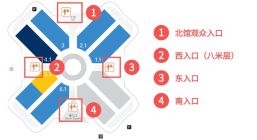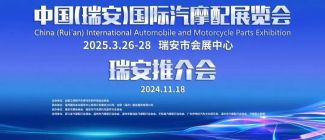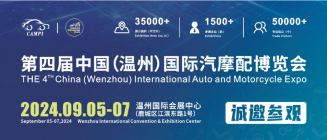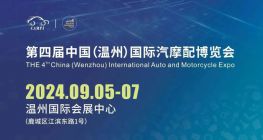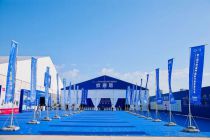As the global automotive industry struggles to move forward in the wave of electrification, a silent revolution is rewriting the power structure of the technological roadmap. The charging anxiety of pure electric vehicles has not completely dissipated, and the commercialization of hydrogen fuel cell vehicles is still far away, while plug-in hybrid and extended range electric vehicles have filled the market gap at an astonishing speed.
In 2024, this technology route, which was once seen as a "transitional solution," is a strategic swing for the entire automotive industry in the deep waters of the energy revolution. When the idealistic electrification blueprint encounters the infrastructure shortcomings of realism, and when the policy oriented technology route collides with the spontaneous choice logic of the market, the explosive growth of plug-in hybrid technology is essentially an industry narrative about "survival wisdom".
This comeback is by no means accidental. After a decade of pure electric storm led by Tesla sweeping the world, the market is showing signs of rational correction: the BEV inventory cycle in the North American market has been extended to 58 days, European consumers' willingness to purchase electric vehicles has decreased by 12 percentage points year-on-year, and the new energy vehicle pile ratio in third - and fourth tier cities in China is still as high as 8:1.
These data have torn apart the glamorous facade of the electrification process, exposing deep-seated contradictions such as lagging charging facilities and fluctuating battery costs. The plug-in hybrid model has hit the three major pain points of the current electrification transformation: it covers 80% of users' daily commuting with pure electric range, uses an internal combustion engine backup system to alleviate range anxiety, and avoids lithium price volatility risks with a 30% lower battery demand than BEVs.
This technological characteristic of being able to attack, retreat, and defend makes it a "safe option" for both car companies and consumers to bet on in the context of increasing global economic uncertainty in 2024.
China promotes global transformation
Data shows that global sales of hybrid vehicles are expected to soar to 12 million units in 2024, with market share climbing to 13.5%. Among numerous hybrid models, plug-in hybrid and extended range performance are particularly eye-catching. By 2024, plug-in hybrid and extended range vehicles are expected to surpass the 6 million mark, becoming a strong force in the hybrid vehicle market.
In the global hybrid vehicle market, the performance of the Chinese market is particularly impressive. In 2024, among the overall sales of 12.866 million new energy vehicles in China, pure electric vehicles accounted for 60%, a year-on-year decrease of 10.4%; The proportion of plug-in hybrid vehicles is 40%, an increase of 10.4% year-on-year. This significant growth is attributed to both active policy support and continuous technological breakthroughs.
As the world's largest plug-in hybrid market, China's rapid growth is mainly due to two key factors: policy support and technology popularization.
The national policy provides positive support for the development of hybrid technology, promoting the steady progress of the hybrid vehicle industry. According to the "Work Plan for Stable Growth in the Automotive Industry (2023-2024)", companies are encouraged to explore innovative technologies such as hybrid power and low-carbon fuels to achieve sustained prosperity in the fuel vehicle market.
The Announcement on Adjusting the Technical Requirements for New Energy Vehicle Products with Vehicle Purchase Tax Reduction and Exemption sets stricter standards for power consumption and fuel consumption for new energy vehicles, especially plug-in hybrid vehicles. This measure aims to better guide consumers to choose energy-saving car models and promote the green and low-carbon transformation of the automotive industry.
In terms of technology, Chinese car manufacturers have made significant progress in the research and development of hybrid power systems. The launch of hybrid platforms such as BYD DM-i, Geely Thunder, and Chery Kunpeng has lowered the price of compact PHEVs to around 100000 yuan, directly competing with traditional fuel vehicles.
These hybrid platforms achieve dual improvements in power performance and fuel efficiency through highly integrated design and advanced control strategies, meeting consumers' demand for high-quality, low fuel consumption vehicles.
Compared with the Chinese market, the development path of hybrid vehicles in the European and American markets is slightly different. In the European and American markets, although the growth rate of pure electric vehicles has slowed down, PHEVs still maintain a strong growth momentum. The penetration rate of plug-in hybrid vehicles in the United States has increased from 1.8% in 2022 to 4.2% in 2024, while the proportion of PHEVs in new energy vehicles in Europe has also risen to 35%.
This growth trend reflects the actual demand for hybrid vehicles in the European and American markets. In areas where charging facilities are not yet complete, consumers are more inclined to choose "dual-purpose" car models that can burn both oil and electricity. PHEVs not only have the environmental advantages of pure electric vehicles, but also provide power support through fuel engines when the battery is depleted, meeting consumers' dual needs for long range and convenience.
The flourishing development of the plug-in hybrid market is ultimately the result of continuous technological progress and effective cost control. The current technological development presents three major characteristics: dedicated platform reconstruction, new heights of thermal efficiency, and intelligent upgrading of extended range technology.
In terms of dedicated platforms, automobile manufacturers are gradually moving away from the traditional model of "oil to electricity" and turning to developing native hybrid platforms. For example, the launch of native hybrid platforms such as BYD DM platform, Changan EPA1, Geely Thunder hybrid platform, etc. not only improves the performance and economy of hybrid vehicles, but also provides more innovation space for car manufacturers.
In terms of thermal efficiency, although the role of internal combustion engine in hybrid system has changed from "leading role" to "supporting role", the requirements for its efficiency are higher. The thermal efficiency of BYD Snapyun 1.5L engine has reached 43.04%, and the thermal efficiency of Toyota's fifth generation THS hybrid system has also exceeded 41%.
These technological advancements have reduced the fuel consumption of PHEVs to around 4L/100km when the battery is low, completely changing the problem of significant performance decline in early plug-in hybrid models after the battery is depleted. High thermal efficiency internal combustion engines not only improve the fuel economy of hybrid vehicles, but also reduce consumer usage costs.
In terms of extended range technology, extended range electric vehicles are upgrading from a "transitional solution" to an independent technological route. The fourth generation range extender of Ideal Automobile has a power generation efficiency of 3.2 kWh/L, and with the high-density battery pack of 255 Wh/kg from CATL, it can achieve a pure electric range of 300 km under CLTC conditions; The super extended range system of Changan Shenlan has an efficiency of producing 3.3 kWh of electricity with 1L of oil, increasing the comprehensive range to 1200km.
These innovations blur the boundary between PHEVs and BEVs, providing consumers with a unique 'electric first' driving experience. The intelligent upgrade of extended range technology not only improves the range and driving comfort of hybrid vehicles, but also provides car manufacturers with more market competitive advantages.
Different major car companies have different strategies
Major automobile manufacturers are increasingly focusing on plug-in hybrid electric vehicles and extended range electric vehicle technologies, viewing them as transitional solutions before the widespread adoption of pure electric vehicles. The purpose of this strategic adjustment is to alleviate consumers' anxiety about the range and solve the problem of insufficient charging infrastructure.
At present, the range of many new electric vehicles on the market has exceeded 1000 kilometers, which even surpasses the range level of traditional internal combustion engine vehicles. With the increasing prosperity of the plug-in hybrid market, there has been a significant differentiation in the strategic choices of car companies in this field. Different car companies have embarked on unique transformation paths based on their own technological reserves, market positioning, and future plans.
AMS2024 Exhibition Guide | Comprehensive Exhibition Guide, Don't Miss the Exciting Events Online and Offline
Notice on Holding the Rui'an Promotion Conference for the 2025 China (Rui'an) International Automobile and Motorcycle Parts Exhibition
On September 5th, we invite you to join us at the Wenzhou Auto Parts Exhibition on a journey to trace the origin of the Auto Parts City, as per the invitation from the purchaser!
Hot Booking | AAPEX 2024- Professional Exhibition Channel for Entering the North American Auto Parts Market
The wind is just right, Qianchuan Hui! Looking forward to working with you at the 2024 Wenzhou Auto Parts Exhibition and composing a new chapter!
Live up to Shaohua | Wenzhou Auto Parts Exhibition, these wonderful moments are worth remembering!
Free support line!
Email Support!
Working Days/Hours!
